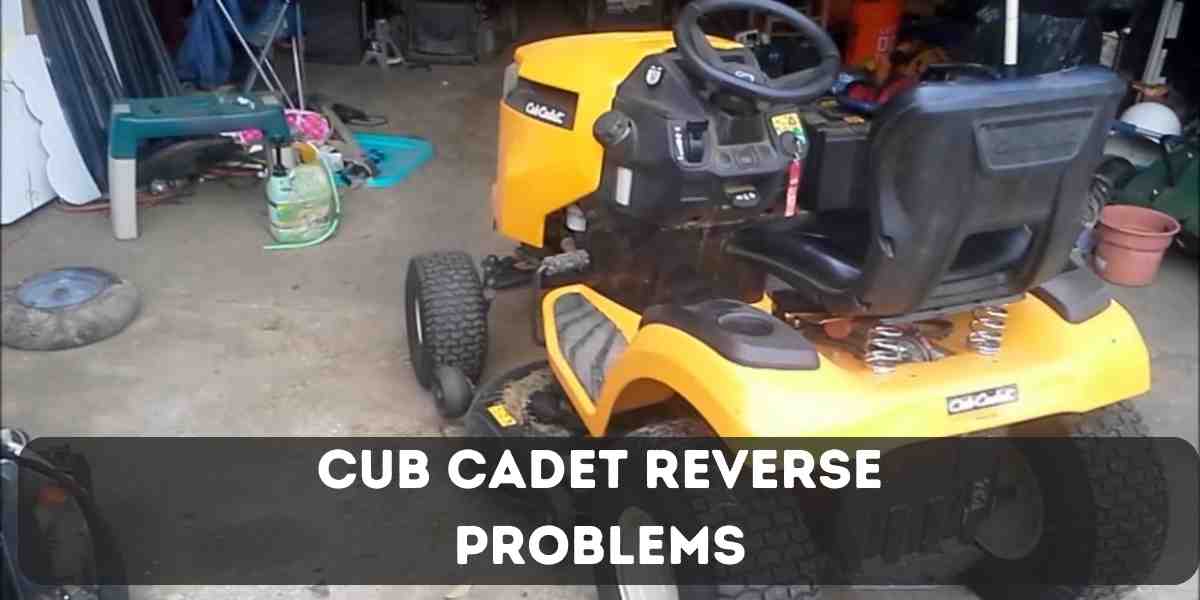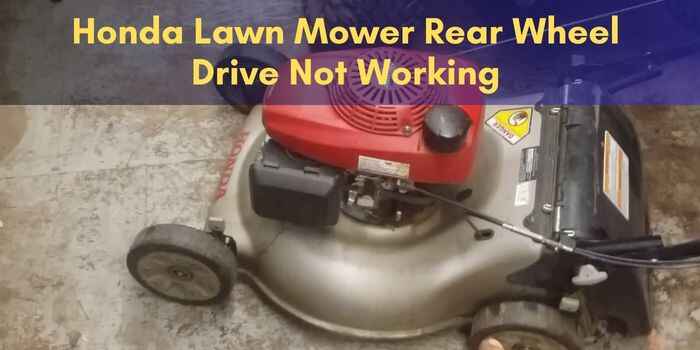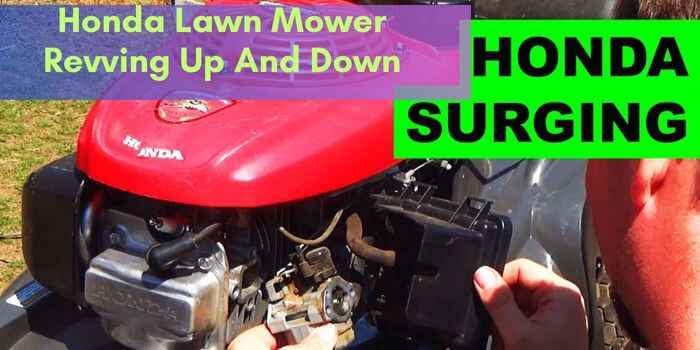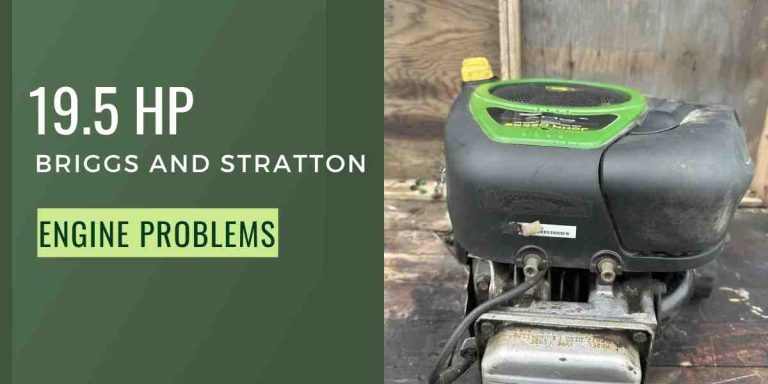Cub Cadet Reverse Problems: How to Troubleshoot and Fix
Cub Cadet Reverse Problems can arise due to issues with the transmission or drive belt, faulty shift control linkage, or a problem with the pulley system. When experiencing reverse problems with a Cub Cadet, check for these common causes before seeking professional assistance.
Having a well-functioning Cub Cadet lawn mower is essential for efficiently maintaining a beautiful yard. However, sometimes users may encounter issues with the reverse function of their Cub Cadet mower.
Cub Cadet Reverse Problems: How to Troubleshoot
We will discuss some common causes of Cub Cadet reverse problems and provide possible solutions to help you resolve them.
Understanding Common Reverse Issues
However, by understanding the common reverse problems that may arise, you can take appropriate measures to address them effectively.
Understanding Common Reverse Issues
When it comes to using a Cub Cadet, encountering reverse problems can be quite frustrating. These issues may disrupt the efficiency of your lawn tractor and hinder your mowing tasks.
Overview of common reverse problems
To begin with, let’s take a closer look at some of the common reverse problems that Cub Cadet owners may encounter. These issues can range from difficulties in shifting into reverse gear to a complete failure of the reverse function.
Here are a few key reverse problems you may come across:
- Failure to engage reverse gear.
- Jerky or erratic movement in reverse.
- Unintended or delayed engagement of reverse.
- Complete loss of reverse function.
Reasons behind reverse problems
Understanding the reasons behind these reverse problems is crucial in order to address the root cause effectively. Several factors can contribute to the occurrence of these issues.
Let’s explore a few common reasons:
- Worn or damaged transmission belts: Over time, the belts that enable the tractor to shift into reverse gear can wear out, leading to difficulties in engaging or maintaining reverse movement.
- Maladjusted or damaged shift linkage: If the shift linkage, responsible for controlling the movement between gears, becomes misaligned or damaged, it can result in problems with shifting into reverse or cause erratic reverse movement.
- Low fluid levels or contaminated fluid: Insufficient fluid levels or contaminated fluid within the transmission can impede the smooth functioning of the reverse gear, leading to issues such as delayed engagement or erratic movement.
- Faulty solenoids or electrical connections: Electrical malfunctions, such as faulty solenoids or loose connections, can disrupt the reverse function of the lawn tractor, causing issues like no reverse movement or intermittent engagement.
Exploring symptoms and warning signs
Identifying the symptoms and warning signs associated with reverse problems is essential to diagnose and resolve the issues promptly.
By paying attention to these indicators, you can take timely action to prevent further damage and ensure the optimal performance of your Cub Cadet.
Here are some common symptoms and warning signs to be aware of:
| Symptoms | Warning Signs |
|---|---|
| Difficulty shifting into reverse gear | Grinding or clunking noises when attempting to shift gears |
| Jerky or erratic movement in reverse | Unusual vibrations or lurching motion while in reverse |
| Delayed engagement of reverse | Noticeable delay between shifting into reverse and the lawn tractor actually moving backward |
| Loss of reverse function | Complete inability to shift into reverse or move backward |
By staying vigilant and promptly addressing these symptoms and warning signs, you can avoid costly repairs and ensure the smooth operation of your Cub Cadet.
In conclusion, understanding common reverse problems in Cub Cadet lawn tractors is crucial for maintaining their optimal performance.
Remember, regular maintenance and timely attention to these issues will help keep your lawn tractor functioning smoothly and efficiently.
Troubleshooting Reverse Issues
Experiencing reverse problems with your Cub Cadet can be frustrating and inconvenient, but luckily there are several troubleshooting steps you can take to diagnose and fix the issue.
By checking the transmission fluid level, inspecting and cleaning the drive belt, testing the reverse safety switch, and adjusting the control linkage, you can often resolve these issues on your own without the need for professional assistance.
Checking the transmission fluid level
The first step in troubleshooting reverse issues is to check the transmission fluid level. Low or contaminated fluid can affect the performance of your Cub Cadet’s reverse function.
To check the fluid level, follow these simple steps:
- Locate the transmission fluid dipstick, usually located near the back of the engine.
- Remove the dipstick and wipe it clean with a cloth or paper towel.
- Reinsert the dipstick into the fill tube and then remove it again to check the fluid level.
- If the fluid level is below the recommended range, add the appropriate type and amount of transmission fluid.
Inspecting and cleaning the drive belt
The drive belt is an essential component of your Cub Cadet’s reverse mechanism. If the belt is worn, damaged, or dirty, it can cause issues with the reverse function.
Here’s how you can inspect and clean the drive belt:
- Locate the drive belt, which is usually located on the underside of your Cub Cadet.
- Inspect the belt for any signs of wear, such as fraying, cracks, or stretching.
- If the belt appears damaged, replace it with a new one following the manufacturer’s instructions.
- If the belt looks dirty or covered in debris, clean it using a soft brush or cloth.
Testing the reverse safety switch
The reverse safety switch is designed to prevent your Cub Cadet from accidentally shifting into reverse while the blades are engaged or the driver is not seated. If this switch is faulty or misaligned, it can cause reverse problems.
Follow these steps to test the reverse safety switch:
- Locate the reverse safety switch, usually positioned near the shifter or the seat.
- Inspect the switch for any signs of damage or misalignment.
- If the switch appears damaged, replace it with a new one following the manufacturer’s instructions.
- If the switch looks fine, use a multimeter to check for continuity when the switch is engaged and disengaged.
Adjusting the control linkage
The control linkage connects the shifter or pedal to the transmission, allowing you to shift into reverse. If the control linkage is misadjusted or loose, it can cause reverse problems.
Here’s how you can adjust the control linkage:
- Locate the control linkage, usually near the transmission or shifter.
- Inspect the linkage for any signs of misalignment or looseness.
- If the linkage appears misadjusted, refer to your Cub Cadet’s owner’s manual for guidance on how to properly adjust it.
- Tighten any loose bolts or connections to ensure a secure linkage.
Examining the reverse switch
The reverse switch is another component that can contribute to reverse issues. If the switch is damaged or malfunctioning, it can prevent your Cub Cadet from shifting into reverse.
Follow these steps to examine the reverse switch:
- Locate the reverse switch, usually positioned near the shifter or transmission.
- Inspect the switch for any signs of damage or corrosion.
- If the switch appears damaged, replace it with a new one following the manufacturer’s instructions.
- If the switch looks fine, use a multimeter to check for continuity when the switch is engaged and disengaged.
By following these troubleshooting steps, you can often identify and resolve reverse problems with your Cub Cadet.
However, if the issue persists or you are unsure about any of the steps, it’s always best to consult a professional for further assistance.
Fixes For Reverse Problems
If you’re experiencing reverse problems with your Cub Cadet, don’t worry – there are several fixes you can try to get your mower or tractor running smoothly again.
From replacing the transmission fluid to adjusting the control linkage, these fixes will address some of the common causes of reverse problems.
Replacing the transmission fluid
If you notice that your Cub Cadet is struggling or failing to go in reverse, it could be due to old or dirty transmission fluid.
Replacing the transmission fluid is a relatively simple and cost-effective solution that can make a big difference in your mower’s performance.
To replace the transmission fluid in your Cub Cadet, follow these steps:
- Start by locating the transmission on your mower.
- Using a suitable container, drain the old fluid from the transmission.
- Carefully remove the transmission fluid filter and replace it with a new one.
- Refill the transmission with the recommended type and amount of fluid as specified in your Cub Cadet’s manual.
- Once the fluid is filled, test your mower to see if the reverse problem has been resolved.
Changing the drive belt
If your Cub Cadet is experiencing reverse problems, a worn or damaged drive belt could be the culprit.
Over time, the drive belt can become stretched, frayed, or even break, affecting the mower’s ability to operate in reverse. Changing the drive belt is a fairly straightforward process that requires basic tools.
To change the drive belt on your Cub Cadet, follow these steps:
- Ensure your mower is turned off and the engine is cool.
- Lift the seat to access the mower deck.
- Locate the drive belt and identify any areas of damage or wear.
- Using a wrench or socket set, loosen the tension on the drive belt and remove it from the pulleys.
- Install the new drive belt, making sure it is properly aligned with the pulleys.
- Tighten the tension on the new drive belt, ensuring it is secure but not overly tight.
- Test your mower to see if the reverse problem has been resolved.
Repairing or replacing the reverse safety switch
The reverse safety switch is an essential component that ensures safe operation of the mower when going in reverse.
If this switch becomes faulty or damaged, it can lead to reverse problems. Repairing or replacing the reverse safety switch is necessary to rectify this issue.
To repair or replace the reverse safety switch on your Cub Cadet, follow these steps:
- Identify the location of the reverse safety switch on your mower.
- Disconnect any electrical connections to the switch.
- Using appropriate tools, remove the faulty switch from its mounting.
- If the switch can be repaired, carefully clean and fix any visible issues.
- If the switch is beyond repair, replace it with a suitable replacement part.
- Secure the new or repaired switch in its mounting and reconnect any electrical connections.
- Test your mower to see if the reverse problem has been resolved.
Adjusting the control linkage
A misaligned or improperly adjusted control linkage can also result in reverse problems with your Cub Cadet. Thankfully, adjusting the control linkage is a relatively simple fix that can make a significant difference in your mower’s performance.
To adjust the control linkage on your Cub Cadet, follow these steps:
- Identify the control linkage mechanism on your mower.
- Locate the nuts or bolts that secure the control linkage in place.
- Loosen the nuts or bolts and adjust the control linkage to ensure proper alignment.
- Tighten the nuts or bolts to secure the adjusted control linkage in place.
- Test your mower to see if the reverse problem has been resolved.
By following these fixes for reverse problems, you can improve the performance of your Cub Cadet and enjoy smooth operation in both forward and reverse.
Preventing Future Reverse Problems
Preventing future reverse problems with your Cub Cadet is crucial to ensuring the longevity and efficiency of your lawnmower.
Proper maintenance and care tips
Proper maintenance and care are essential for preventing reverse problems in your Cub Cadet. By following these tips, you can keep your lawnmower in optimal condition:
- Regularly change the oil and filters according to the manufacturer’s recommendations. Clean oil and filters help maintain the performance of the transmission system.
- Ensure the tires are properly inflated and in good condition. Underinflated or damaged tires can put unnecessary strain on the transmission, leading to potential problems in reverse.
- Clean the undercarriage regularly to prevent the buildup of debris and grass clippings, which can obstruct the transmission and impede reverse operation.
- Store the Cub Cadet in a dry and covered area, protecting it from moisture and rust. Moisture can affect the functionality of the transmission.
- Tighten any loose or worn-out belts. Loose belts can cause slipping and affect the reverse performance.
Regularly inspecting and lubricating components
To avoid potential reverse problems, it is crucial to conduct regular inspections and lubricate components as needed. Follow these steps:
- Inspect the drive belt for any signs of wear or damage. Replace it if necessary.
- Check the transmission fluid level regularly, following the manufacturer’s guidelines. Low fluid levels can impact the reverse functionality.
- Inspect the linkage and ensure it is properly adjusted. A misaligned or loose linkage can hamper reverse operation.
- Lubricate all moving parts, such as the pivot points, pulleys, and axles, to reduce friction and enhance the performance of the transmission system.
Safe driving practices to avoid excessive stress on the transmission
To prevent excessive stress on the transmission, practice safe driving habits when operating your Cub Cadet:
- Avoid sudden and aggressive acceleration or deceleration, as it can strain the transmission system.
- Gradually shift into reverse without applying excessive force or jerking the controls.
- Avoid overloading the lawnmower or towing objects beyond its recommended capacity. Excessive weight can put undue stress on the transmission.
- Take caution while driving over rough terrain or obstacles that could cause damage to the transmission. Slow down and navigate carefully to prevent potential reverse problems.
Professional servicing and tune-ups
Regular professional servicing and tune-ups are essential for maintaining the health of your Cub Cadet’s transmission.
Here’s why:
- Professionals can identify and resolve any early signs of reverse problems before they escalate.
- They have the necessary expertise and tools to conduct a thorough inspection of the transmission system.
- During tune-ups, professionals can adjust and fine-tune components to optimize the performance of the reverse function.
- Professional servicing helps ensure your Cub Cadet operates efficiently, reducing the risk of reverse issues.
By adhering to these maintenance tips, regularly inspecting and lubricating your Cub Cadet’s components, adopting safe driving practices, and seeking professional servicing when needed, you can prevent future reverse problems and enjoy seamless operation of your lawnmower.
Frequently Asked Questions
How Do I Fix Reverse Problems With My Cub Cadet?
If you are experiencing reverse problems with your Cub Cadet, there are several steps you can take to fix the issue. First, check the transmission fluid levels and ensure they are at the appropriate level. Next, inspect the drive belt for any signs of damage or wear.
Additionally, clean the drive system and make sure the control linkage is properly adjusted. If these steps do not resolve the issue, it is recommended to consult a professional for further assistance.
Why Won't My Cub Cadet Go In Reverse?
If your Cub Cadet is having trouble going in reverse, there are a few potential causes. First, check the transmission fluid levels and ensure they are at the correct level. If the fluid levels are fine, examine the drive belt for any signs of damage or wear.
Additionally, clean the drive system and ensure the control linkage is properly adjusted. If the problem persists, it is advisable to seek help from a certified Cub Cadet technician.
What Is Causing My Cub Cadet To Not Engage In Reverse?
There are a few possible causes for your Cub Cadet not engaging in reverse. One common issue is a low transmission fluid level. Ensure that the fluid is at the appropriate level. Another potential cause could be a worn or damaged drive belt.
Check the belt for signs of wear and replace it if necessary. Lastly, make sure that the control linkage is properly adjusted. If these steps do not solve the problem, consulting a professional is recommended.
How Can I Prevent Reverse Problems With My Cub Cadet?
To avoid reverse problems with your Cub Cadet, it is important to perform regular maintenance. Regularly check the transmission fluid levels and ensure they are at the correct level. Inspect the drive belt for signs of wear and damage, and replace it if necessary.
Additionally, keep the drive system clean and properly adjust the control linkage. By following these maintenance tips, you can help prevent reverse problems and ensure the smooth operation of your Cub Cadet.
Final Thought
To summarize, troubleshooting Cub Cadet reverse problems can be a frustrating task, but by following the steps mentioned in this blog post, you can easily diagnose and fix common issues.
Regular maintenance, such as checking the transmission fluid and inspecting the drive belt, is crucial for ensuring smooth operation.
Remember to consult the owner’s manual and seek professional help if needed. By addressing reverse problems promptly, you can keep your Cub Cadet running smoothly and enjoy a hassle-free gardening experience.
Read More:






